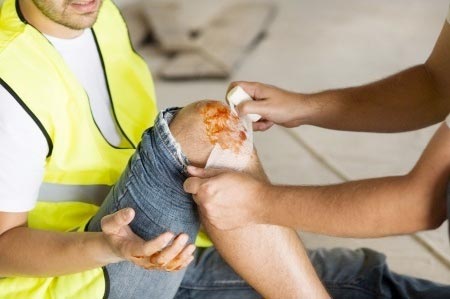Bloodborne Pathogens (BBP) Hazards
In the workplace, bloodborne pathogens (BBP) may be transmitted when blood or other infectious body fluids come in contact with mucous membranes (your eyes, nose, mouth), non-intact skin (due to cuts, abrasions, burns, rashes, paper cuts), or by handling or touching contaminated materials or surfaces. Bloodborne pathogens are also transmitted by “injection” under the skin via a contaminated sharp object puncturing or cutting the skin causing a wound.

When your job is helping other people who are ill or injured, you could be putting your own health at risk. Exposure to lethal bloodborne diseases is a job hazard for health care providers, first aid attendants, and emergency responders.
For your safety, you need to assume that the blood of any person is infected with a lethal disease.
First Aid Exposure:
If you administer first aid to an injured person in the workplace and there is a potential for contacting any body fluids, you should adhere to the following “universal precaution” guidelines:
-
Wear impervious gloves when there is a chance of exposure to blood or body fluids.
-
Wear a face shield to protect your entire face and safety goggles to provide the most complete eye protection.
-
Use resuscitation devices when performing cardiopulmonary resuscitation (CPR).
-
Report all BBP exposures or potential exposures to your supervisor immediately.
-
Immediately wash your hands and affected areas with soap and warm water.
-
Flush your eyes, nose, or other mucous membrane areas with water, if exposed.
-
Wash down areas which body fluids may have contacted with a mild solution of household water and bleach (10:1).
The best protection against blood-borne pathogens is universal precautions!!!
Download flyer: STOTW_437_BloodbornePathogens(BBP)Hazards.pdf (356.65 kb)
Download Spanish flyer: STOTW_437_BloodbornePathogens(BBP)Hazards_esp.pdf (356.90 kb)

